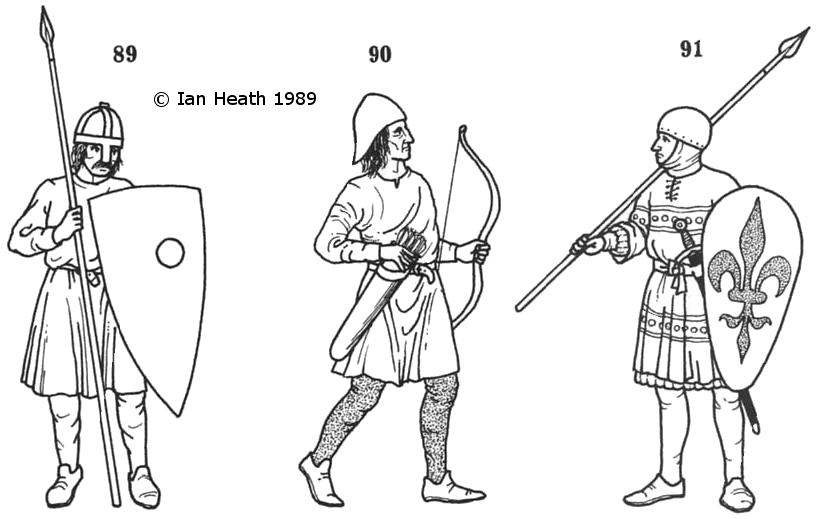
Try Amazon Audible Plus
ITALIAN COMMUNAL MILITIAMEN, 12th-13th CENTURIES
An extract from Armies of Feudal Europe 1066-1300by Ian Heath
 |
||
| [Based on the Porta Romana frieze] | [Based on the Basilica di San Zeno porch lunette by Nicholaus, Verona, c.1135-38] | [Based on the Codex Manesse] |
